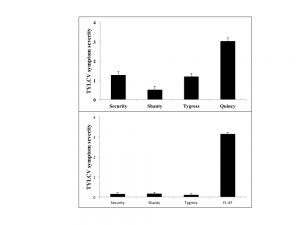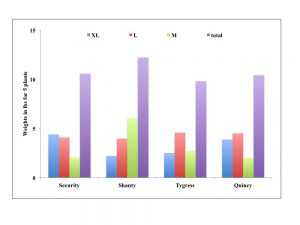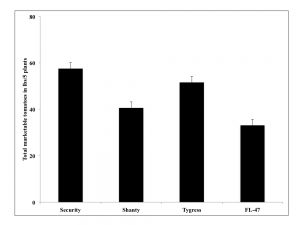The common cultivated tomato (Solanum esculentum L.) is very susceptible to TYLCV. However, breeding for TYLCV was successfully initiated with numerous wild parents, such as Solanum peruvianum, Solanum chilense, and Solanum babrochaites (Lapidot and Friedman 2002). Numerous commercially available TYLCV-resistant cultivars such as Shanty, Security, Tygress, and Inbar are currently available in the southeastern USA, and a number of breeding accessions also are in the pipeline. The resistance imparted is generally mediated by a single semi-dominant gene (Ty-1) and is directed towards the pathogen. Recently, cultivars with other resistance-conferring genes such as Ty-2 and Ty-3 also have been developed. Most of these cultivars in general exhibit good resistance to TYLCV. These cultivars are not immune to the virus and accumulate TYLCV, but they are known to exhibit mild symptoms or no symptoms at all following TYLCV infection . However, these cultivars do not possess any resistance to whiteflies and support substantial whitefly populations. In turn, they could also serve as TYLCV inoculum sources as whiteflies can acquire virus from TYLCV-resistant cultivars and inoculate them to other tomato plants.
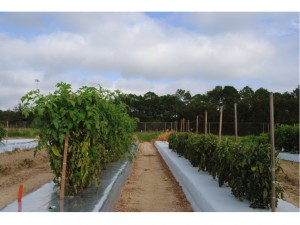
Fig. 1 TYLCV resistant cultivar on the left and the susceptible on the left of same age
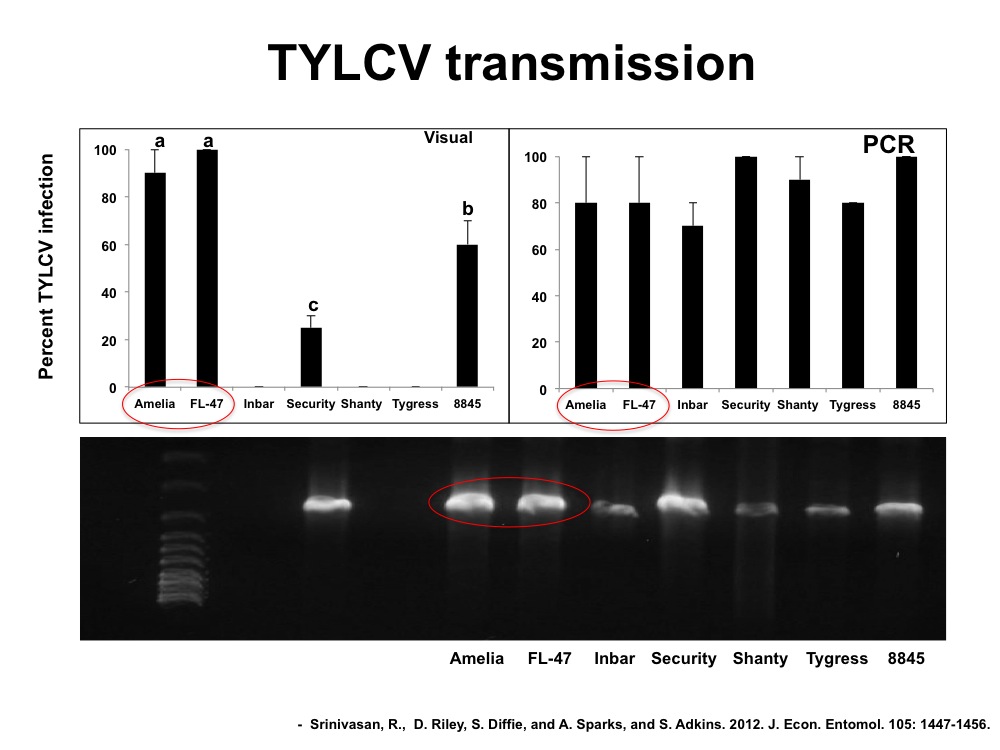
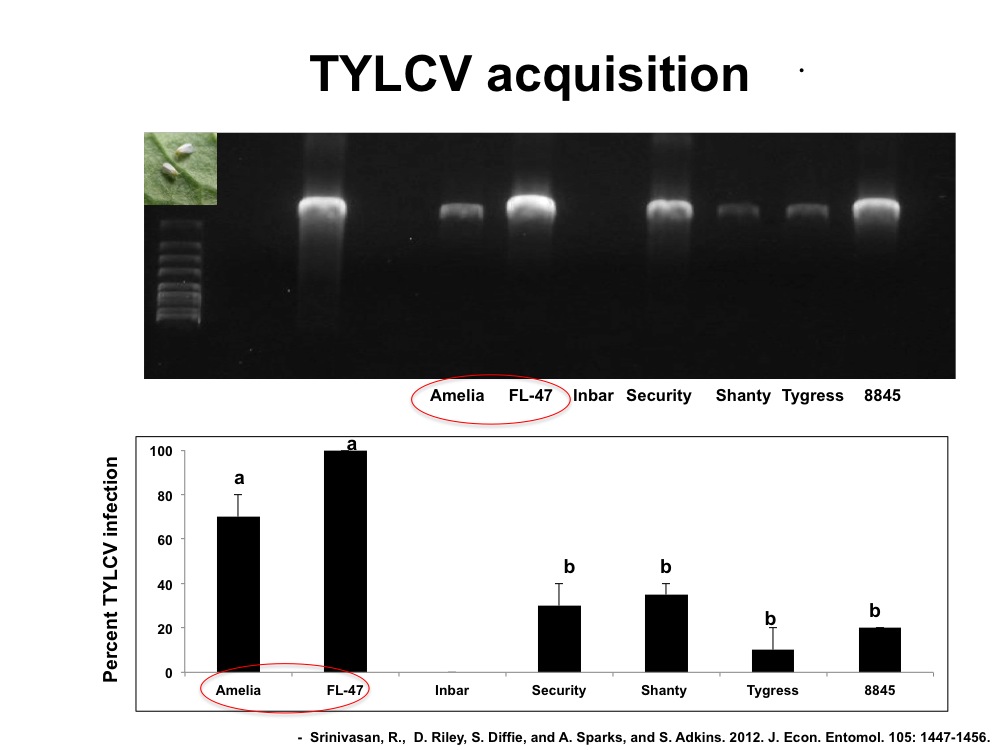
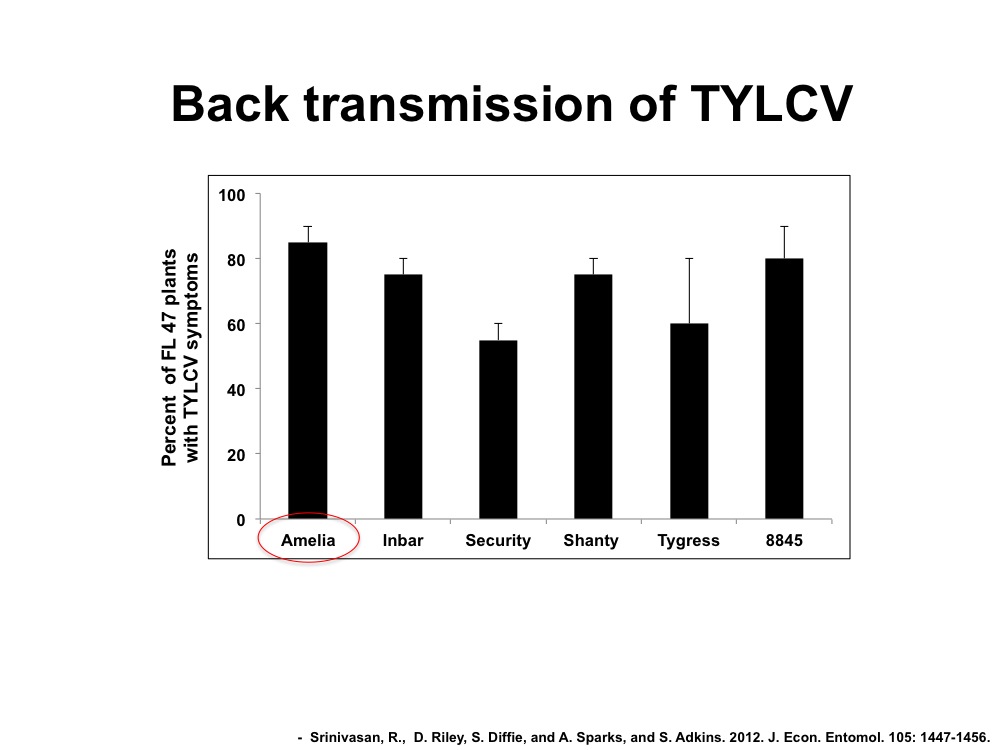
Fig. 2 (Left) TYLCV infection in resistant cultivars assessed by visual inspection and by PCR, (Middle) TYLCV acquisition by whiteflies from susceptible and resistant cultivars, and (Right) back transmission of TYLCV by whiteflies from resistant cultivars to a susceptible cultivar.
This suggests that insecticides will have to be applied to prevent direct feeding damage by whiteflies and related physiological disorders. Despite the availability of TYLCV-resistant cultivars, growers are very reluctant to plant them due to perceptions such as resistant cultivars have poor horticultural attributes, poor storability, and they are highly susceptible to bacterial and fungal pathogens. Continuous breeding efforts have resulted in TYLCV-resistant cultivars with highly desirable attributes that are comparable to the grower-preferred cultivars. Currently, less than one-third of the tomato acreage is planted with resistant cultivars in the Southeast likely due to perceived negative marketing characteristics of the resistant lines (Ozores-Hampton et al. 2010). Also, there are no resistant cultivars available for indeterminate cherry type or grape type tomatoes. Due to the longer presence of indeterminate tomato plants in the fields and lack of TYLCV resistance increases their susceptibility to TYLCV infection and also increases their chances to serve as TYLCV inoculum sources. New resistant cultivars are released every year, so a website that serves as a single source of information on the performance of new and established TYLCV- resistance cultivars might help growers in the decision-making.
Besides TYLCV, numerous other insect transmitted viruses also affect tomato production in the southeast. They include Tomato spotted wilt virus (TSWV), Tomato chlorosis virus (ToCV), Cucumber mosaic virus (CMV), Potato virus Y (PVY), Tomato mottle virus (ToMoV), and Tobacco etch virus (TEV). Some of the resistant cultivars exhibit resistance to more than one virus, for instance a few cultivars exhibit resistance to both TYLCV and TSWV (Hazera lines). Nevertheless, the stability of resistance in the presence of multiple viruses has not been investigated. Several of the above-mentioned viruses are known to synergistically interact with other viruses and such synergistic interactions often have resulted in increased symptom expression and increased titer accumulation of component viruses (Vance et al. 1993, Anandalakshmi et al. 1998, Srinivasan and Alvarez 2007). Such effects can significantly influence susceptibility of tomato plants and cause extensive yield losses. Though available, resistant cultivars do not serve as a silver bullet for TYLCV management and other cultural tactics may be needed to ameliorate the problem.
TYLCV-resistant and susceptible cultivars were evaluated through field trials. The observations obtained included whitefly adult and immature counts, TYLCV incidence and severity, yields and other post harvest attributes. The trials typically employed a split-split plot design with mulch as the main plot effect, resistant cultivars and insecticides as the sub plot effects, respectively. The treatments were at lest replicated four times, and the trials were conducted from 2013 to 2015.
Response to whiteflies
TYLCV resistant cultivars are only resistant to the virus but not the insecticides. Consequently, whiteflies both resistant and susceptible cultivars serve as hosts for whiteflies. Whitefly management still remains critical whether TYLCv-resistant or susceptible cultivars are planted.
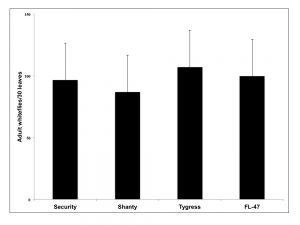
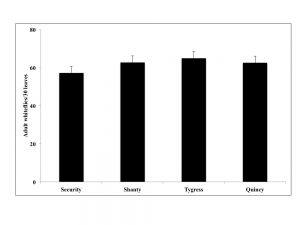
Fig. 3. Adult whitefly counts on TYLCV susceptible and resistant cultivars obtained in 2013 (top) and in 2014 (bottom). FL-47 and Qunicy are considered TYLCV-susceptible cultivars, and others are considered TYLCV-resistant
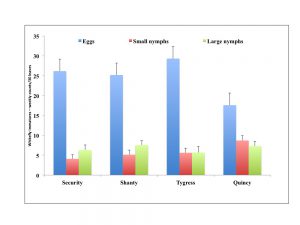
Fig. 4. Immature whitefly counts on TYLCV -resistant and susceptible cultivars, weekly counts were obtained in 2014.
TYLCV susceptibility
TYLCV-resistant cultivars were not immune to TYLCV. They did not produce hypersensitive response either. Instead, infected plants displayed fewer symptoms. Consequently, the infected resistant cultivars yielded better than TYLCV-susceptible cultivars. Included below are some graphs that explain the same.
Fig 5. TYLCV infection percentages in TYLCV-resistant and susceptible cultivars in 2013 and 2014.
Counts taken close to harvest indicate that the percentage of TYLCV infection increased with time. The infection percentages in susceptible cultivars ranged up to 90%, in some years it even reached 100%. Nevertheless, the symptom severity ratings indicated that resistant cultivars had less severe symptoms when compared with TYLCV-susceptible cultivars.
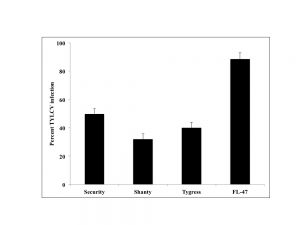
Fig. 6. TYLCV incidence in TYLCV susceptible and resistant cultivars in 2015, Incidence was observed approximately two weeks before harvest.
Fig. 7. TYLCV symptom severity in TYLCV susceptible and resistant cultivars in 2015, Symptom rating was observed approximately two weeks before harvest in 2014 (top) and 2015 (bottom).
Yields
]Marketable yields in general under moderate and high virus pressure was greater in resistant cultivars when compared with susceptible cultivars. Marketable yields typically involve extra large, large, and medium sized fruits. Smaller fruits were not included.
Fig. 8. Marketable yields in TYLCV susceptible and resistant cultivars in 2014. Weights are from five plants from each plot.
Fig. 9. Total marketable yields in TYLCV susceptible and resistant cultivars in 2015. Weights are from five plants from each plot.
Fig. 10. Differences in tomato quality in TYLCV-resistant (left) and TYLCV-susceptible cultivars (right).
Post harvest traits in TSWV susceptible and resistant cultivars
A number of post harvest traits were evaluated including taste with help of a sensory panel. Results indicated that there were hardly any differences with respect to taste between fruits from TYLCV-resistant and TYLCV-susceptible cultivars, and were typically indistinguishable. However, differences in other post harvest traits such as firmness and brix content were observed. Firmness was higher in TYLCV-resistant cultivars than in susceptible cultivars; on the contrary, brix content was higher in TYLCV-susceptible cultivar FL-47 than in TYLCV-resistant cultivars. No major differences were observed in other post harvest characteristics such as juice content and acidity between the susceptible and resistant cultivars.
Fig. 11. Post harvest traits in TYLCV-resistant and TYLCV-susceptible cultivars.
Commercial availability of TYLCV-resistant cultivars
Several cultivars with intermediate resistance to TYLCV are commercially available. Some names and useful links are listed below.
Determinate
SecuriTY 28, Tygress (Seminis),Adonis (Seminis), Shanty (Hazera), Margo(Seminis), Champion II hybrid, Sun King, Red Luck (Seminis), Lava (Seminis), Charger (Sakata), Skyway
Indeterminate
Tovi Toca (Zeraim Gedera), VT-62966(Zeraim Gedera), VT-62940 (Zeraim Gedera)
Useful links

